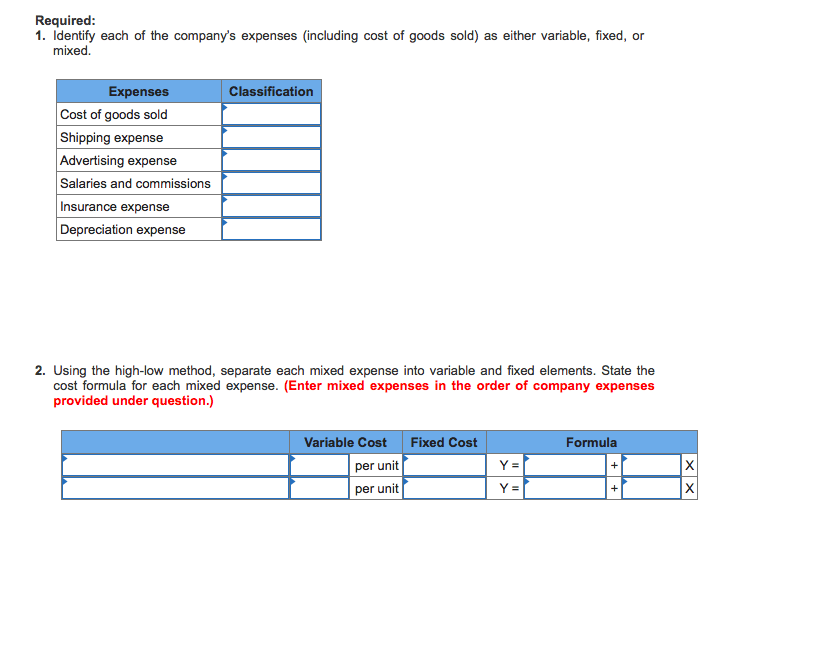FACT SHEET: The Build Back Better Agenda Will Provide Greater Tax Fairness for Small Businesses

Combined, this could result in a tax rate with a potential maximum of 25.8%. On the other end of the spectrum, states with the highest tax rates include New York and New Jersey. In fact, New Jersey ranks at the very bottom of the Tax Foundation’s report with one of the highest corporate tax rates at 9% and individual income tax rates. Ninety-five percent of all businesses in the U.S. are recognized as pass-through businesses.

S corporations in California have to pay a 1.5% franchise tax on net income, with a minimum threshold of $800. For example, 1.5% of an S corporation’s net income of $100,000, or $15,000, goes towards California state income tax. Further, any individual shareholder has to pay tax on their share of an S corporation’s income for their personal tax returns, respectively. An S corporation pays a lower tax rate of 1.5% on net corporate income instead of the corporate tax of 8.84% for traditional corporations, passing the profits to the business owners. California is unusual in that while it recognizes an S-corporation as a business organization, it doesn’t recognize an S-corporation as a pass-through business. Texas is consistently lauded for its business-friendly tax framework, particularly for new and small businesses.
Updates to Small Business Tax Rates
And if you have employees, employment taxes (such as social security taxes and payroll taxes) are mandatory. Since sole proprietorships, partnerships, and LLCs are pass-through entities, you may wonder what the federal income tax rates are for 2022 as a small business. Income tax rates can range from 10% to 37%, depending on your tax bracket. All pass-through business owners in California pay the state income tax. This includes independent contractors, sole proprietors, and other unincorporated businesses, as well as members of LLCs, partners in a partnership, and shareholders of an S corporation.
- Small business owners must pay all of the taxes mandated by the federal government, as well as those required in the state and local governments where they have employees.
- Payroll taxes exist to fund government assistance programs, such as Medicare, Social Security and unemployment.
- Knowing (and avoiding) some common compliance pitfalls ensures that you won’t be surprised by an unexpected sales tax obligation.
- Even though you’re paying estimated taxes quarterly, you still need to file an annual federal income tax return.
- The B&O tax is calculated on gross income from business activities.
- S corporations in California have to pay a 1.5% franchise tax on net income, with a minimum threshold of $800.
Schedule a free consultation to see how we can help your business. The location of the sale, not the business location, will determine how much you pay in sales tax. For example, if your business is in one state but sells to someone in another state, you’ll pay the respective state’s sales tax. Certain states have reciprocal agreements that allow businesses to only collect sales tax from customers within their own state. It’s best to check with an accountant or tax professional to comply with the applicable laws.
What Taxes Do Businesses Pay?
Like most states, Texas subjects corporations to its standard business tax, the franchise tax. As with all businesses, the no-tax-due threshold and E-Z Computation rules apply to corporations. Corporations in California without taxable income and LLCs that choose to operate as corporations are also subject to the California franchise tax. If you need help with annual or quarterly taxes, be sure to talk to a tax professional. Tax planning is an ongoing process, especially if you’re self-employed, and a tax pro can help you make accurate estimated payments and file your annual return. Under certain circumstances, an individual may be exempt from income tax, but this rule does not apply to payroll taxes.
Inflation Reduction Act 1-Year Report Card: IRS Delivers … – Treasury
Inflation Reduction Act 1-Year Report Card: IRS Delivers ….
Posted: Wed, 16 Aug 2023 08:00:00 GMT [source]
However, the remaining 5% are C-corporations (C-corps) with a very distinctive means of taxation. C-corps go through a double taxation process, paying income tax on profits before individual shareholders are taxed on dividends recorded on personal returns. As a small business owner, it’s up to you to prepare to pay your federal income taxes. We recommend setting aside 30 to 40% of your net income per year to cover your federal and state taxes.
Don’t Forget Self-Employment Taxes
With Bench on your side, tax filing stress is a thing of the past. Connect your bank, credit card, and merchant accounts to our platform, and a team of bookkeepers tracks every transaction for you. No more searching for receipts or trying to remember transactions, just clear information updated monthly you can use for tax filing, financing, forecasting, and more.
The average tax rate for small businesses is around 20%, but this figure can fluctuate notably depending on your state, business structure, income, expenses, and deductions. In successful companies, after paying expenses and taxes, dividends are often paid to owners. This leads to double taxation, where the corporate shareholders are taxed at an individual level while the corporation’s earnings were already taxed at the corporate level.
Treasury and Financial Systems
Each category of business tax might have special rules, qualifications, or IRS forms you need to file. The two most common types of state and local tax requirements for small business are income taxes and employment taxes. A de-icing business, How much do small businesses pay in taxes Olaf and Company, brings in $30,000 during the year, but it also spends $30,000 on new equipment and supplies. Because the income and expenses of the business are equal, the company has zero taxable income and doesn’t owe any taxes.

Not only must you be concerned with income tax but other costs such as self-employment and excise taxes. With legal implications for your business, taxes can make or break your success. Tax liabilities can differ depending on business structure, location, and several other factors. Sole proprietors, for example, may face a 13% federal tax rate, while small partnerships and S-corporations (S-corps) pay nearly 24% and 27%, respectively. Small business owners don’t have income tax and Social Security and Medicare taxes withheld, so they must pay these taxes as self-employment tax.
What Is the Corporate Tax Rate?
Your business entity type and preferred filing status will also affect your tax rate. For example, LLCs that opt for the IRS to tax them as corporations are subject to corporate tax rates. Other businesses like sole proprietorships and limited partnerships may be subject to self-employment taxes. Understanding your entity type and requirements is the first step toward filing your taxes accurately and efficiently. When you think about business taxes, you might picture a corporation. That’s because sole proprietorships, partnerships and limited liability companies (LLCs) pay taxes at the owner’s personal rate — not as a separate corporation.
On the flip side, the least favorable states for small business tax purposes include New York, California, and New Jersey, with their common factor being high tax rates. For example, New Jersey not only has high property taxes but also has the second-highest corporate income tax in the country, an inheritance tax, and poorly-structured individual income taxes. The amount you’ll pay in small business taxes depends on many factors, most importantly business structure and location. The average pass-through business owner ranks within the 22% personal income tax bracket. With pass-through taxation, a company doesn’t pay income taxes directly.
Businesses structured as LLCs are unusual in that they have several options for how they’re taxed. The IRS may tax an LLC as a sole proprietorship or partnership, depending on how many people own the business. As a small business, understanding your tax liability is absolutely essential to long-term financial success. It’s important that you do adequate research to ensure you’re well-prepared for costs that will pop up down the line and to stay informed on all write-offs and deductions you can take advantage of. Thankfully, the IRS probably won’t be interested in auditing your small business until you turn a profit.
When do business owners pay small business taxes?
Since small business (non-corporate) tax rates are tied to the total income of the business owners, we need to look at the current individual income tax rates. When filing your taxes, you can deduct your self-employment tax payments as an adjustment to income on your tax return. This deduction ensures that you aren’t double-taxed on the same money. Other tax credits may be available to small business owners to offset some or all of the cost of paying self-employment taxes. Small business taxes can be complicated, as there isn’t a single tax form or even a single tax rate that applies to all businesses.
Xendoo’s business tax services will help you figure out what you owe if you’re unsure of how to calculate your estimated taxes. Corporations must make estimated tax payments on the 15th day of the fourth, sixth, ninth and 12th month of its fiscal year. Owners of pass-through businesses must make estimated tax payments, which are generally due April 15, June 15, Sept. 15 and Jan. 15 of the following year.
Who are the biggest taxpayers in Bradenton and Manatee County? Here’s the list for 2023 – Bradenton Herald
Who are the biggest taxpayers in Bradenton and Manatee County? Here’s the list for 2023.
Posted: Mon, 21 Aug 2023 09:50:00 GMT [source]
If your business has employees, you’ll be responsible for paying state employment taxes. These vary by state, but often include workers’ compensation insurance, unemployment insurance taxes, and temporary disability insurance. You might also be responsible for withholding employee income tax. Check with your state tax authority to find out how much you need to withhold and when you need to send it to the state. We’ll cover small business tax rates, filing requirements, and various strategies that can help to reduce your taxes.
For tax year 2022, the individual tax rates range from 10% to 37%, the latter of which applies to income over $539,900 ($647,850 for married couples filing jointly). Since Carolyn is single and has a total taxable income of $90,000, looking at the table above, she can determine she falls into the 24% tax bracket. But that doesn’t mean all $90,000 of her taxable income is taxed at 24%. If your business is structured as a C corporation, estimating the amount of tax you’ll owe on your business profits is pretty simple.
You then transfer this amount to your personal income tax form and include it with all other personal income tax items. Sole proprietorships, partnerships, LLCs, and S-corps use the pass-through method, wherein profits and losses are reported on the business owner’s and shareholders’ personal tax returns. This means that profits (i.e income) are taxed at the personal rate.
